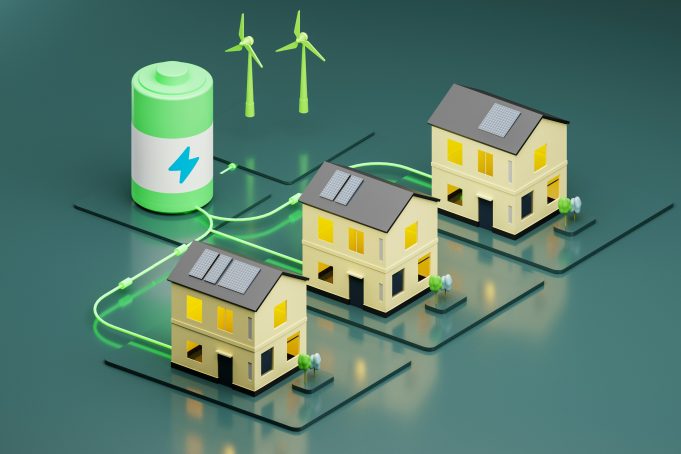In today’s rapidly evolving built environment, the path to genuinely low‑carbon buildings hinges not only on materials and insulation but on intelligent, real‑time awareness of energy and emissions. Imagine being equipped with the ability to monitor key building signals seamlessly, enabling early detection of inefficiencies, proactive maintenance, and optimal energy performance.
Key Takeaways
- Instant insights into building systems help cut energy waste and improve comfort.
- Real‑time sensing supports smarter retrofits and maintenance strategies.
- Linking sensor data with renewable generation delivers operational clarity.
- Enhancing user awareness complements grants and retrofit advice for maximal impact.
- Smarter building signals support long‑term planning for net‑zero and embodied‑carbon reduction.
Understanding the Role of Real-Time Building Signals
Why Building Signals Matter
For those working to decarbonise buildings, whether through better insulation, energy grants, or low‑carbon retrofit strategies, real‑time data let us understand how systems perform day‑to‑day. Instead of relying solely on periodic surveys or static assessments, live signals enable building owners and professionals to:
- Detect anomalies (e.g., unexpected heating spikes) early.
- Quantify the precise impact of upgrades (like adding insulation or renewable energy systems).
- Encourage occupant behaviour changes, based on actual usage insights.
Integrating Sensor-Derived Insights
Linking real‑time signals with renewable technologies, such as solar panels or heat pumps, creates a powerful combination. When you can see exactly when a heat pump runs, or whether your solar array is feeding power back into the grid, it becomes far simpler to maximise efficiency and make informed decisions.
Moreover, this awareness empowers building owners to make the most of incentive schemes. Understanding real‑time energy flows allows for precise forecasting of savings, improving the business case for retrofit grants and performance‑based incentives.
Deploying Sensors in Low-Carbon Retrofits
Strategically Placing Sensors
Not every corner needs to be instrumented. Focus on key areas:
- Thermal zones: to monitor heating or cooling effectiveness.
- Renewable inlets: to see when solar or heat pump technologies deliver energy.
- Occupancy or behaviour metrics: to encourage more sustainable usage patterns.
These smart placements let stakeholders pinpoint failures, detect inefficiencies, and verify that retrofit investments deliver the promised savings.
Enhancing Building Value and Performance
Improving insulation or installing modern systems often brings significant energy reductions, up to 30–50%, in many retrofits. But combining these retrofits with real‑time data elevates the result:
- You can validate performance, increasing confidence and market value.
- Insurance of performance can aid in securing finance for further upgrades.
- Performance transparency may support compliance with emerging low‑carbon building standards and reporting frameworks.
Aligning with Net-Zero and Embodied Carbon Goals
The Net-Zero Imperative
Transitioning toward net‑zero buildings involves not only reducing operational emissions but considering embodied carbon too, that is, the emissions associated with building materials and construction (and retrofit) processes.
Real‑time monitoring offers insight into operational use, allowing more strategic decisions about when to retrofit or how to phase in new materials with lower embodied carbon impacts.
Informing Policy and Practice
The UK’s Merton Rule (requiring new commercial buildings over a certain size to generate at least 10% of their own energy on-site) shows how policy can drive renewable integration. Accurate, real‑time data strengthens compliance and demonstrates the effectiveness of those systems over time.
Likewise, embodied carbon considerations, particularly around the use of materials like bio‑based timber, benefit from signal-supported approaches that show how operational efficiency and material choices together drive carbon reductions.
Encouraging Behavioural Shifts Through Visibility
Empowering Occupants
When building users can see how their energy use impacts carbon and costs, for instance, via dashboards that show heating patterns or energy flows, small behaviour shifts can add up. Passive solar design and bioclimatic principles illustrate that design works with behaviour to reduce energy loads.
Amplifying Retrofit Value
Not all efficiency gains come from physical upgrades. Awareness of usage patterns, such as when and how heating or cooling is used, can lead to more thoughtful routines, further lowering demand without additional spending.
Bridging the Gap: From Passive Buildings to Active Intelligence
Consider how one might monitor key building signals, for instance, tracking heat pump performance or solar generation in real time, to inform maintenance and improve operational outcomes. This natural phrasing could link to a sensor solution that provides that kind of insight: here’s an example of how you might monitor key building signals that could seamlessly integrate with retrofit and net-zero strategies.
Linking practical sensor insights with grant-driven retrofit activity helps unlock maximum energy performance and carbon reduction benefits.
Summary of Strategic Advantages
| Benefit Area | How Real-Time Signals Help |
| Energy Optimisation | Spot inefficiencies early; adjust and validate system performance. |
| Retrofit Justification | Provide evidence that upgrades (e.g., insulation, systems) work. |
| Carbon Accountability | Inform operational and embodied carbon reduction strategies. |
| Behavioural Influence | Visualise use patterns to encourage sustainable practices. |
| Policy & Incentive Support | Demonstrate compliance and impact for grants and regulations. |
By embedding smart, sensor-based awareness into the upgrade and operation of buildings, we can truly elevate the impact of low-carbon strategies — making them not just dependent on policies or materials, but on insights that keep emission reductions working well into the future.














